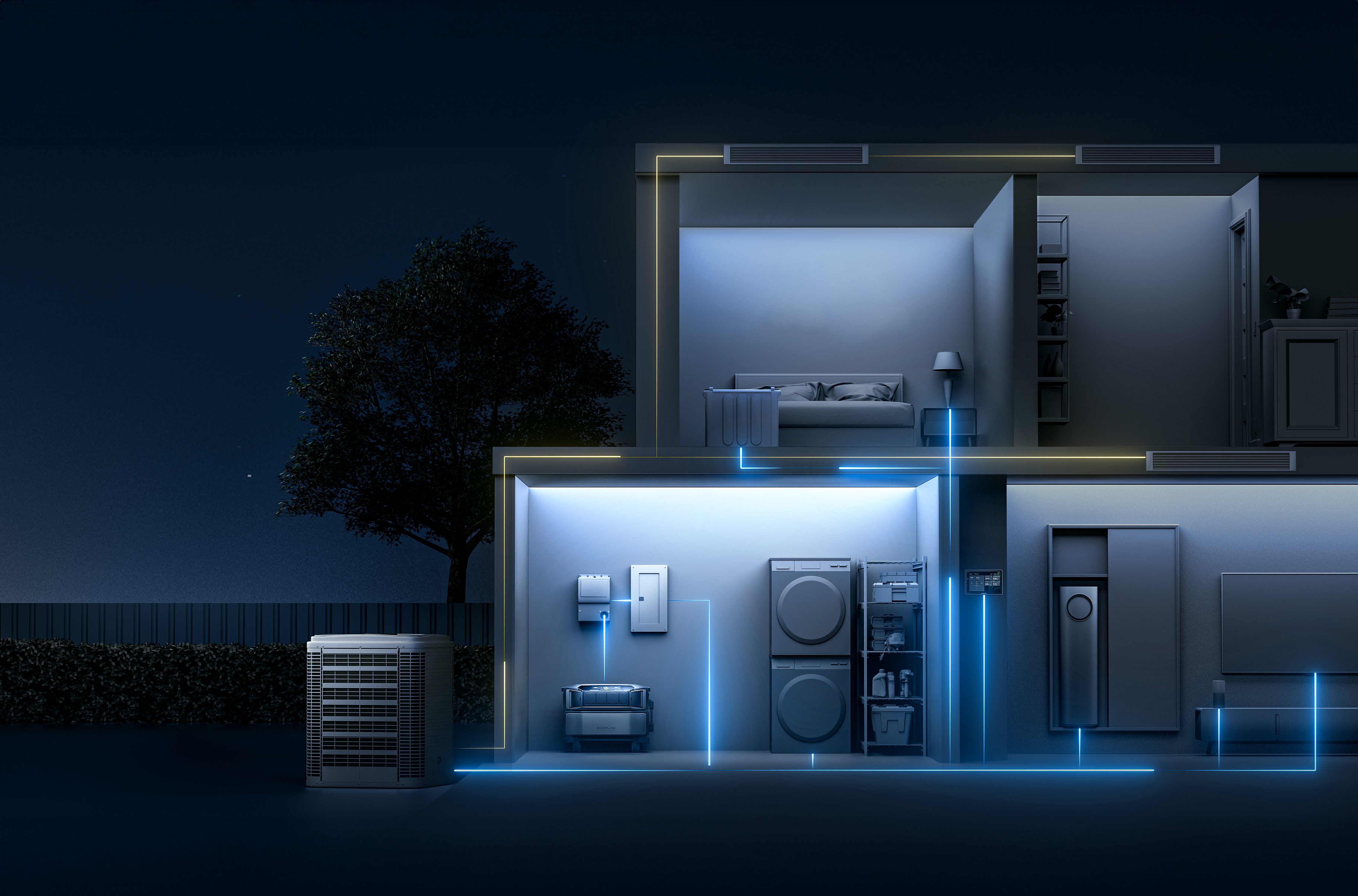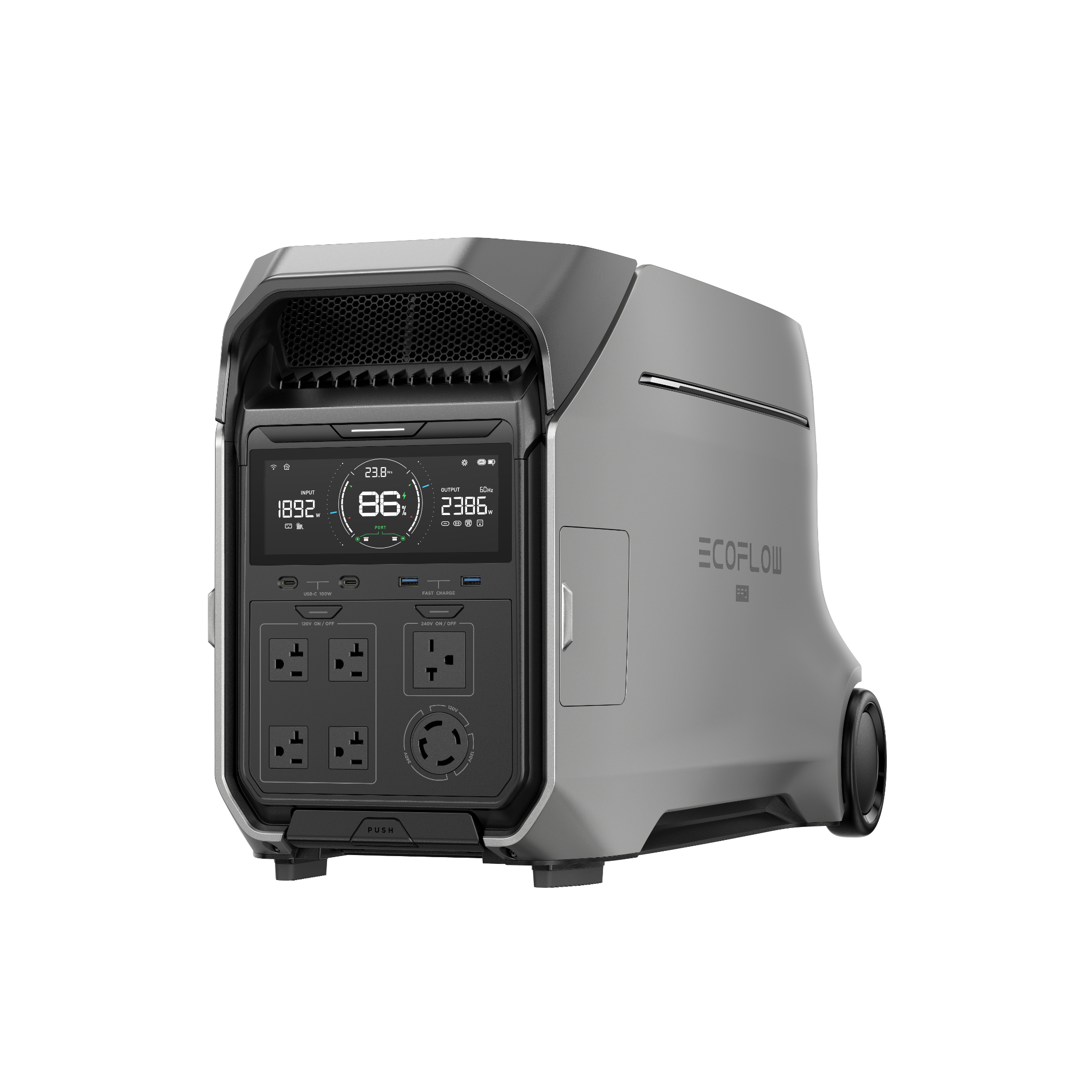How Many Amps Does a Dryer Use? Power Breakdown & Energy Tips
Clothes dryers are among the most power-hungry appliances in the home. Whether you’re wiring a new laundry room, planning for off-grid power, or just trying to lower your electric bill, you might wonder: How many amps does a dryer use?
This guide breaks down the power needs of various types of dryers, how to calculate amperage, and how you can manage—or even power—a dryer using battery systems like those from EcoFlow.
Understanding Amps, Volts, and Watts
Before we dive into numbers, let’s clarify a few key terms:
Amps (A): The flow of electrical current
Volts (V): The pressure or force pushing the current
Watts (W): The total power used
To calculate amps:
Amps = Watts ÷ VoltsIn
the U.S., most full-size electric dryers run on 240 volts, while compact models and gas dryers typically use 120 volts. Knowing your dryer’s voltage and wattage helps you determine the amperage and ensure it’s compatible with your home’s circuits—or with a portable power station.
How Many Amps Does a Dryer Use?
1.Full-Size Electric Dryers (240V)
Most residential electric dryers fall into this category. They typically consume:
Power: 5000–6000 watts
Voltage: 240 volts
Amps: ~21–25 amps
These dryers often require a dedicated 30-amp circuit, which allows some headroom beyond the actual draw.
2.Gas Dryers (120V)
Gas dryers use natural gas or propane to generate heat but still need electricity to power the motor, timer, and control panel.
Power: 350–700 watts
Voltage: 120 volts
Amps: ~3–6 amps
Gas dryers are much more power-efficient electrically and can often run off a smaller power system.
3.Compact or Portable Dryers (120V)
Designed for apartments, RVs, or off-grid use, these units use significantly less energy.
Power: 1500–2500 watts
Voltage: 120 volts
Amps: ~10–13 amps
These dryers may plug into a standard wall outlet, making them more versatile in power-limited environments.
Comparison Table: Dryer Amperage by Type
Dryer Type | Power (W) | Voltage (V) | Amps (A) |
Full-Size Electric | 5000–6000 | 240 | 21–25 |
Gas Dryer | 350–700 | 120 | 3–6 |
Compact Electric | 1500–2500 | 120 | 10–13 |
How to Check Your Dryer’s Amperage
To get your dryer’s specific amp usage:
Check the nameplate or user manual – Usually found on the back or inside the door frame.
Use a multimeter – For real-time measurement of current draw.
Smart plugs with energy monitoring – Ideal for smaller 120V dryers.
Check your breaker panel – Electric dryers often have a dedicated 30A breaker.
Knowing the amperage ensures your wiring is safe and helps when sizing backup or off-grid power systems.
Does a Dryer Use a Lot of Electricity?
Yes—especially full-size electric dryers. On average:
One cycle: 2 to 6 kWh (depending on settings and load size)
Monthly usage: ~30 to 70 kWh for a family using the dryer 4–5 times per week
Monthly cost:
At $0.30/kWh (e.g., California rates): $9–$21/month
At national average $0.15/kWh: $4.50–$10.50/month
Compared to lights or fridges, dryers are major contributors to household energy bills—especially if used frequently or inefficiently.
Can You Run a Dryer on a Portable Power Station?
This is where it gets interesting for RVers, tiny home owners, and off-grid enthusiasts.


Full-Size Electric Dryers?
Generally no—they exceed the output capacity of most portable power stations, even high-end ones.
Gas or Compact Dryers?
Yes—with the right system. For example:
EcoFlow DELTA Pro Power Station
Output: 3600W (7200W surge)
Battery Capacity: 3600Wh (expandable)
Voltage Options:Supports 120V and 240V split-phase setups (with Smart Home Panel)
Use Case:
Runs compact electric dryers for 1–2 loads
Runs gas dryer controls for multiple loads
Works as an emergency backup for grid-tied homes
When paired with solar panels, you can recharge during the day and run the dryer at night—great for off-grid cabins or energy-saving households.


Tips to Reduce Dryer Energy Usage
If you want to lower your power draw—or extend battery runtime—try these smart strategies:
Use wool dryer balls: Speeds up drying and reduces wrinkles
Clean the lint trap: After every cycle to maximize airflow
Dry full loads: Avoid drying just a few items at a time
Use moisture-sensing cycles: Auto-stops when clothes are dry
Line dry when possible: Especially for lighter clothing
Run during off-peak hours: If you’re on a time-of-use electricity plan
Combine with solar power: Store energy during the day for nighttime use
Even small tweaks can make your dryer much more efficient.
Conclusion
So, how many amps does a dryer use? The answer depends on the type:
Full-size electric dryers: 21–25 amps
Gas dryers: 3–6 amps
Compact dryers: 10–13 amps
Understanding your dryer’s amp draw helps with safe installation, energy planning, and determining what kind of backup power you might need.
And if you’re looking to run your dryer during an outage, or want to reduce reliance on the grid, EcoFlow’s high-output portable power stations offer smart, scalable solutions for powering laundry off-grid or during peak-rate periods.
FAQs: How Many Amps Does a Dryer Use
1. How many amps does a standard electric dryer use?
Most full-size electric dryers use between 21 and 25 amps, operating on a 240V circuit with 5000–6000 watts of power consumption.
2. How many amps does a gas dryer use?
Gas dryers typically draw 3 to 6 amps on a 120V circuit. Electricity is only used for the motor and controls, as heating is handled by gas.
3. Can I plug a dryer into a regular 120V outlet?
Only compact or portable electric dryers and gas dryers are designed for 120V outlets. Full-size electric dryers require a dedicated 240V outlet and 30A breaker.
4. Can I run a dryer using a portable power station?
Only compact or portable electric dryers and gas dryers are designed for 120V outlets. Full-size electric dryers require a dedicated 240V outlet and 30A breake
5. Can I run a dryer using a portable power station?
You can run compact electric or gas dryers using a high-capacity power station like the EcoFlow DELTA Pro. Full-size electric dryers typically require more power than most stations can provide.
6. How do I find out how many amps my dryer uses?
Check the manufacturer’s label (usually inside the door frame or back panel), read the manual, or divide the wattage by the voltage using the formula Amps = Watts ÷ Volts.